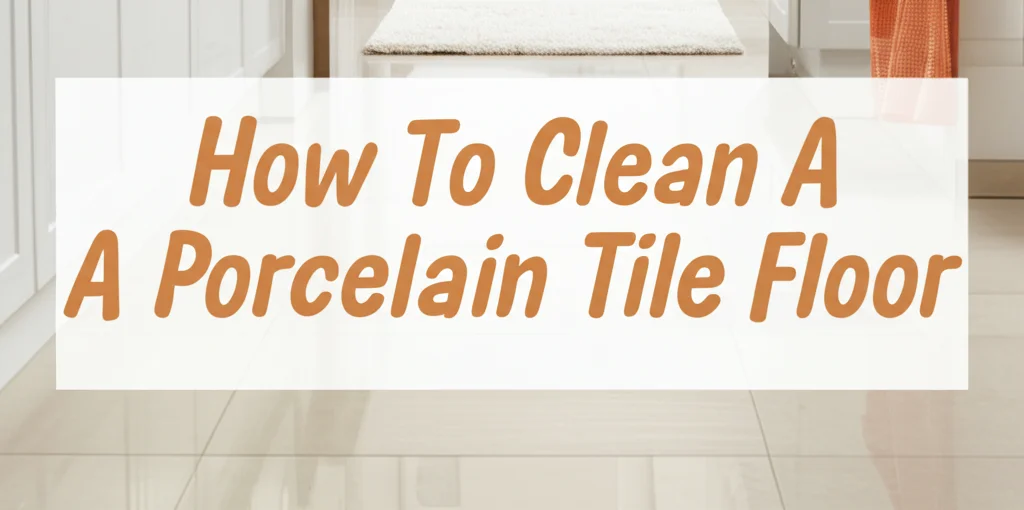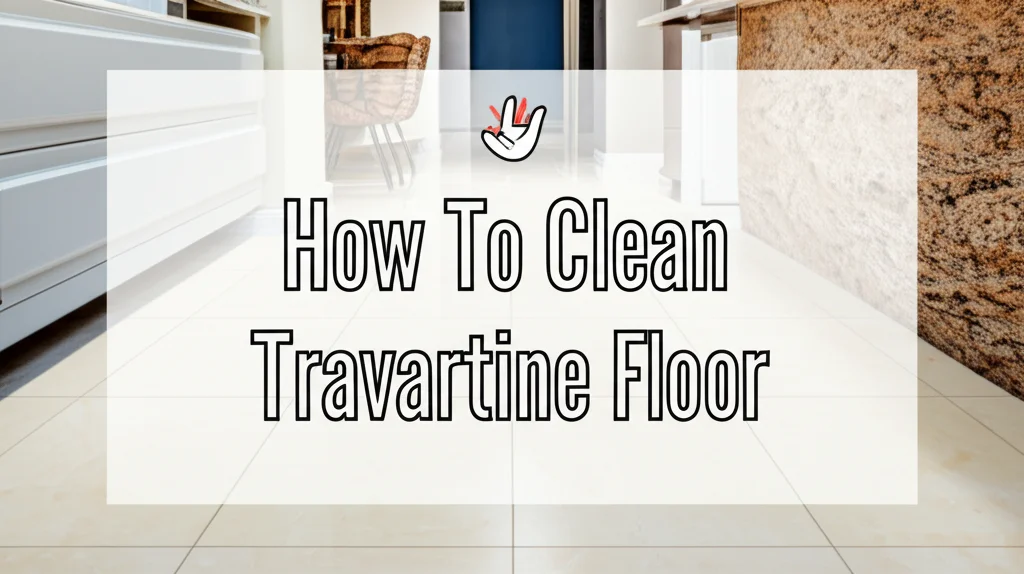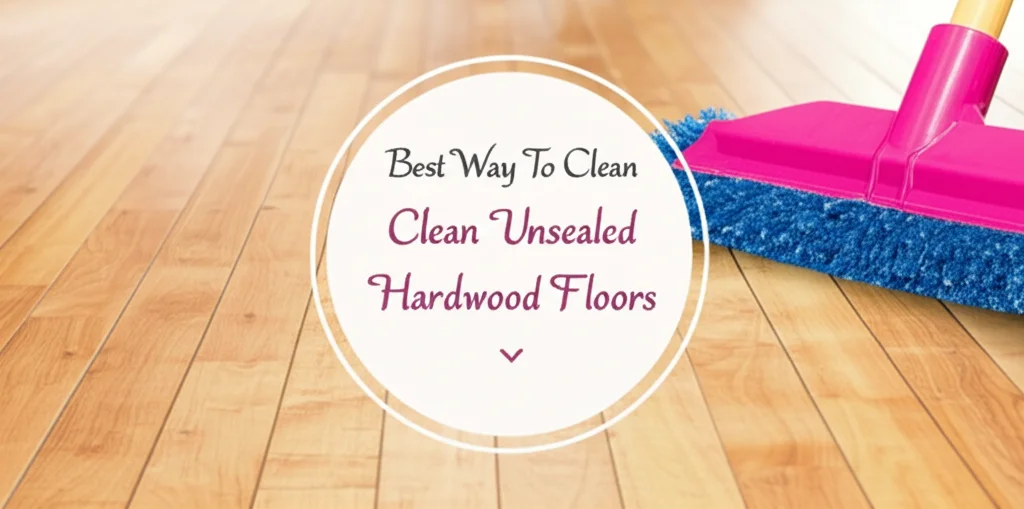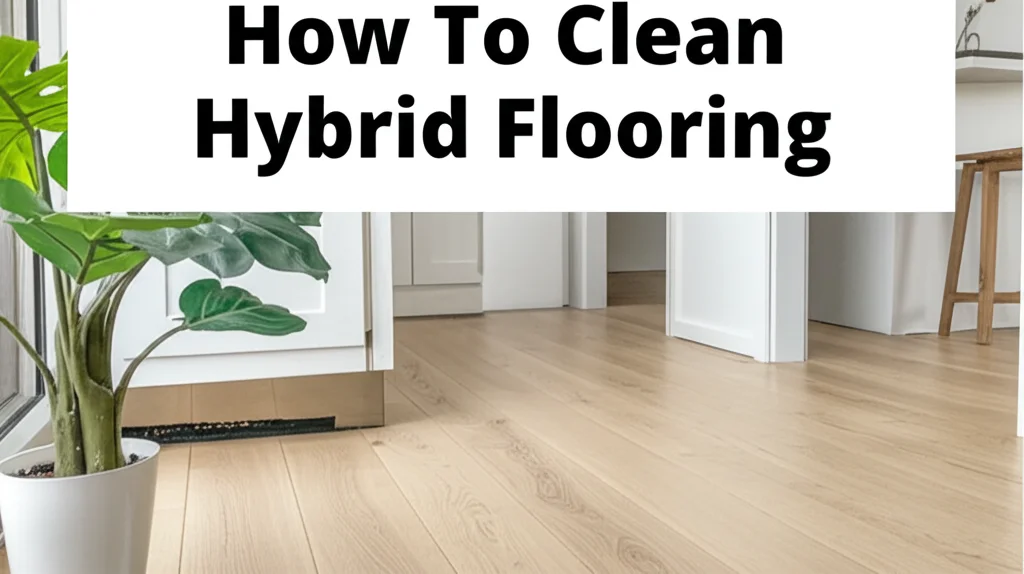· Flooring · 13 min read
How To Clean A Porcelain Tile Floor

How to Clean Porcelain Tile Floors: The Ultimate Guide
Porcelain tile floors are popular in homes across America for their durability, elegant appearance, and relative ease of maintenance. However, to keep these floors looking their best for years to come, proper cleaning techniques and products are essential. This comprehensive guide will walk you through everything you need to know about how to clean porcelain tile floors effectively, from daily maintenance to tackling tough stains and restoring shine to dull tiles.
Takeaway:
- Regular sweeping and vacuuming prevents scratches on porcelain tiles
- Mild cleaners like dish soap or vinegar solutions are effective for routine cleaning
- Avoid acidic cleaners, steel wool, and oil-based products on porcelain tiles
- Steam cleaning is excellent for deep cleaning porcelain tiles without chemicals
- Proper grout cleaning and sealing extends the life of your porcelain tile floors
Understanding Porcelain Tile Floors
Porcelain tiles are a type of ceramic tile made from denser clay and fired at higher temperatures, making them more durable and less porous than standard ceramic tiles. This quality makes porcelain ideal for high-traffic areas and moisture-prone spaces like bathrooms and kitchens.
Porcelain tiles come in various finishes:
- Polished - Smooth, shiny surface that shows scratches and watermarks more easily
- Unpolished/Matte - Less slippery and more forgiving with dirt visibility
- Textured - Offers slip resistance but can trap dirt in surface indentations
- Glazed - Has a protective layer that enhances stain resistance
Before diving into cleaning methods, it’s important to identify which type of porcelain tile you have, as cleaning approaches can vary slightly depending on the finish. Most modern porcelain tiles are highly resistant to staining, but the cleaning method you choose should still consider the specific finish of your tiles.
Essential Tools and Cleaners for Porcelain Tile Floors
Having the right tools on hand makes cleaning porcelain tiles much more efficient. Here’s what you’ll need:
- Microfiber mop - Ideal for daily cleaning without scratching
- Soft-bristled broom or vacuum with hard floor setting - For removing loose debris
- Microfiber cloths - Perfect for buffing and drying
- Bucket - For mixing cleaning solutions
- Spray bottle - For spot treatments
- Grout brush or old toothbrush - For focused grout cleaning
For cleaners, consider these porcelain-safe options:
- pH-neutral floor cleaner - Specifically formulated for tile
- Mild dish soap - An effective everyday cleaner
- White vinegar - For deeper cleaning (when properly diluted)
- Hydrogen peroxide - For stain removal
- Baking soda - For gentle scrubbing and odor removal
Having these supplies readily available will make regular maintenance much easier and help you tackle unexpected spills promptly.
Daily Maintenance for Porcelain Tile Floors
The secret to keeping porcelain tile floors looking pristine is consistent daily maintenance. Just a few minutes each day can prevent dirt buildup that leads to dull-looking tiles and stained grout.
Start by implementing these simple daily habits:
Sweep or vacuum regularly to remove abrasive particles that can scratch your tile surface. For busy households, aim to do this daily, especially in high-traffic areas.
Wipe up spills immediately to prevent staining, particularly in kitchen areas where food and drink spills are common.
Use entrance mats at doorways to trap dirt, sand, and moisture before they reach your porcelain tiles.
Remove shoes when entering the house to minimize dirt and potential scratching from gritty shoe bottoms.
For a quick daily cleaning, simply dampen a microfiber mop with warm water and run it over your floors. This light cleaning prevents buildup without the need for cleaning products every day, which can leave residue over time if not properly rinsed.
Remember that prevention is always easier than deep cleaning, so these small daily tasks will save you significant time and effort in the long run.
How to Deep Clean Porcelain Tile Floors
Even with regular maintenance, porcelain tile floors need occasional deep cleaning to remove accumulated grime and restore their original luster. Here’s a step-by-step approach to deep cleaning your porcelain tiles:
Step 1: Clear and Prepare the Area
Remove furniture, rugs, and obstacles from the cleaning area. Sweep or vacuum thoroughly to remove loose dirt and debris that could scratch your tiles during mopping.
Step 2: Choose the Right Cleaner
For a homemade solution, mix:
- 1/4 cup white vinegar
- 1 tablespoon dish soap
- 2 gallons of warm water
Or use a commercial pH-neutral tile cleaner according to the manufacturer’s instructions.
Step 3: Mop Properly
- Dip your microfiber mop in the cleaning solution, wring it until damp (not soaking wet).
- Work in small sections of about 3x3 feet.
- Use figure-eight motions to clean effectively.
- Change your cleaning solution when it becomes visibly dirty.
Step 4: Address the Grout
Grout lines often need special attention since they’re more porous than porcelain. Apply a grout-specific cleaner or a paste made from baking soda and water. Scrub with a grout brush or old toothbrush, then rinse thoroughly.
Step 5: Rinse Thoroughly
This critical step removes cleaning residue that can dull your tiles:
- Empty your bucket and fill with clean warm water.
- Rinse your mop thoroughly.
- Go over the entire floor with clean water.
- Change the rinse water as needed.
Step 6: Dry Completely
Use microfiber cloths or a dry microfiber mop to dry the floor completely. This prevents water spots and eliminates slip hazards.
For particularly dirty floors, you might need to repeat the process. Deep cleaning like this should be done every 2-3 months, depending on foot traffic and how quickly your floors show soil.
How to Clean Porcelain Tile Floors with Vinegar
Vinegar is a popular, eco-friendly cleaning solution that works well on porcelain tiles when used correctly. Here’s how to use vinegar effectively without damaging your porcelain tiles:
Why Vinegar Works
Vinegar’s acidity helps dissolve grease and mineral deposits while disinfecting surfaces. However, this same acidity means it must be properly diluted to avoid potential damage to certain tile finishes or grout.
Proper Vinegar Solution Recipe
- 1 cup white vinegar (not apple cider vinegar)
- 1 gallon of warm water
- Optional: 5-10 drops of essential oil (like lemon or tea tree) for fragrance
This dilution is safe for most porcelain tiles while still being effective for cleaning.
Application Method
- Mix the solution in a bucket.
- Dampen your microfiber mop (not soaking wet).
- Clean in small sections, using light pressure.
- For tough spots, let the solution sit for 5-10 minutes before mopping.
- Always follow with a clean water rinse to remove any vinegar residue.
Cautions When Using Vinegar
- Don’t use vinegar on marble or natural stone surfaces interspersed with your porcelain.
- Avoid using undiluted vinegar, as it may be too acidic and potentially damage grout over time.
- Test in an inconspicuous area first, especially on polished porcelain.
- Don’t mix vinegar with bleach products (creates toxic chlorine gas).
Vinegar solutions work particularly well for removing soap scum from bathroom porcelain tiles and addressing hard water deposits that can make tiles look dull. For how to clean bathroom floor without mop, vinegar solutions in spray bottles with microfiber cloths can be very effective.
Removing Stains from Porcelain Tile Floors
Despite porcelain’s resistance to staining, accidents happen. Different stains require different approaches for effective removal without damaging your tiles.
Common Stain Types and Solutions
For organic stains (coffee, tea, food, pet accidents):
- Mix hydrogen peroxide with a small amount of water
- Apply to the stain with a clean cloth
- Let sit for 10 minutes
- Rinse thoroughly with clean water
For grease or oil stains:
- Apply dish soap directly to the stain
- Let sit for 5-10 minutes
- Scrub gently with a soft brush
- Rinse with warm water
For rust or mineral stains:
- Make a paste with baking soda and water
- Apply to the stain
- Let sit for 15-20 minutes
- Scrub gently and rinse
For ink or dye stains:
- Dab (don’t rub) with rubbing alcohol on a cloth
- Work from the outside in
- Rinse thoroughly
Addressing Stubborn Stains
For particularly stubborn stains, you might need a commercial poultice designed for porcelain. Apply according to manufacturer directions and allow to draw out the stain over 24-48 hours.
Always test any stain removal method in an inconspicuous area first to ensure it won’t damage or discolor your tile. For difficult stains on grout rather than tile, you might want to check how to clean floor grout without scrubbing for additional techniques.
Cleaning Porcelain Tile Floors in Special Areas
Different areas of your home have unique cleaning challenges due to their function and exposure to different types of soil and moisture.
Kitchen Porcelain Tiles
Kitchen floors face food spills, grease splatters, and heavy foot traffic. For effective cleaning:
- Clean up food spills immediately to prevent staining
- Use a degreasing cleaner monthly to prevent buildup
- Pay special attention to areas near the stove and sink
- Consider using a steam cleaner quarterly for deep sanitizing
Kitchen tile floors often accumulate greasy residue that makes them slippery. A solution of warm water with dish soap works exceptionally well for cutting through kitchen grease on porcelain tiles.
Bathroom Porcelain Tiles
Bathroom porcelain tiles need special attention due to high moisture and soap scum:
- Use a squeegee on shower tiles after each use
- Ensure adequate ventilation to prevent mold and mildew
- Clean weekly with a vinegar solution to address mineral deposits
- Pay special attention to grout lines where mold can develop
For shower porcelain tiles specifically, a weekly spray with equal parts vinegar and water can help prevent soap scum buildup. If you’re wondering what is the best cleaner for porcelain tile in a shower, specialized shower cleaners with enzymes can break down body oils and soap residue effectively.
Outdoor Porcelain Tiles
For porcelain tiles in patios, porches or poolside areas:
- Sweep regularly to prevent scratching from outdoor debris
- Rinse with a garden hose to remove pollen and environmental soils
- Use a pressure washer on low setting for seasonal deep cleaning
- Address algae or moss growth promptly with a solution of oxygen bleach
Outdoor porcelain requires more frequent cleaning during pollen season and after storms that may deposit debris on your tiles.
Maintaining and Protecting Porcelain Tile Floors
Beyond regular cleaning, protecting your porcelain tile floors helps maintain their appearance and extends their lifespan.
Grout Sealing
While porcelain itself is non-porous, grout between tiles is vulnerable to staining:
- Apply a quality grout sealer every 1-2 years
- Choose a penetrating sealer for invisible protection
- Follow manufacturer’s instructions for application
- Allow adequate drying time before walking on the floor
Preventing Scratches and Damage
- Use furniture pads under all legs of furniture
- Lift rather than drag heavy items across the floor
- Place mats at entrances to trap abrasive particles
- Consider area rugs in high-traffic zones
Products to Avoid on Porcelain Tiles
- Oil-based cleaners that leave residue
- Abrasive powders that can scratch polished finishes
- Bleach (except in very diluted solutions)
- Ammonia-based cleaners on colored grout
- Wax-based products that create buildup
Professional Maintenance
Consider professional cleaning every 2-3 years for:
- Deep extraction of embedded soil
- Restoration of heavily soiled grout
- Application of protective treatments
- Assessment of any needed repairs
For tiles that have lost their luster over time, professionals can often restore the shine with specialized equipment and products designed for porcelain restoration.
How to Make Porcelain Tile Floors Shine Again
Over time, porcelain tiles may lose their original luster due to cleaning product residue, hard water deposits, or general wear. Here’s how to restore their shine:
For Polished Porcelain
- Deep clean first using the methods described earlier
- Polish with a specialized porcelain polish designed for ceramic and porcelain tiles
- Buff with a clean, dry microfiber cloth using circular motions
- Consider a commercial polish specifically designed for porcelain tiles
For Unpolished/Matte Porcelain
- Focus on thorough cleaning rather than adding shine products
- Use a steam cleaner to remove embedded dirt that dulls appearance
- Rinse very thoroughly after cleaning to remove all residue
Natural Shine Restoration
For those preferring natural methods:
- Mix equal parts white vinegar and water
- Mop the floor and let it air dry
- Buff with a microfiber cloth
Remember that applying wax or oil-based polishes is not recommended for porcelain tiles as they create buildup that attracts dirt and dulls the natural finish over time. If your tiles have extensive etching or damage, consult with a professional about restoration options.
For those interested in comparing cleaning methods for different flooring types, you might find how to clean luxury vinyl plank flooring helpful in understanding the differences in maintenance requirements.
Best Tools and Cleaners for Porcelain Tile Floors
Investing in quality cleaning tools and products makes maintaining porcelain tile floors much easier and more effective.
Best Mops for Porcelain Tile Floors
- Microfiber flat mops - Excellent for daily cleaning without scratching
- Steam mops - Great for sanitizing and deep cleaning without chemicals
- Spin mops - Good for wringing out excess water to prevent damage
Top Commercial Cleaners
- Bona Stone, Tile & Laminate Floor Cleaner - pH-neutral and leaves no residue
- Black Diamond Stoneworks Tile & Grout Cleaner - Effective for both tile and grout
- Better Life Natural Tub and Tile Cleaner - Plant-based and non-toxic
Effective DIY Cleaners
- Mild dish soap solution - 1-2 drops in a gallon of warm water
- Vinegar solution - 1 cup vinegar to 1 gallon warm water
- Baking soda paste - For spot cleaning stains and whitening grout
Tools to Avoid
- Abrasive scrubbers - Can scratch polished surfaces
- Sponge mops - Push dirty water into grout lines
- Oil-based or wax applicators - Create problematic residue
When selecting tools and cleaners, consider the specific finish of your porcelain tiles and any manufacturer recommendations. For specialized cleaning situations like dealing with grout, resources like what is the best homemade tile grout cleaner can provide additional guidance.
FAQ: Common Questions About Cleaning Porcelain Tile Floors
What is the best cleaning solution for porcelain tile floors?
For regular maintenance, a simple solution of warm water with a few drops of mild dish soap works exceptionally well. For deeper cleaning, a mixture of 1/4 cup white vinegar in a gallon of warm water is effective. Commercial pH-neutral cleaners specifically formulated for porcelain are also excellent options.
How do you clean natural porcelain tiles without streaks?
To avoid streaks, always use a clean microfiber mop, rinse the floor thoroughly after cleaning to remove any soap residue, and dry the floor with a clean microfiber cloth. Working in small sections and changing your cleaning water frequently also helps prevent streaking.
Do porcelain tiles need special cleaning products?
No, porcelain tiles don’t typically require special products. Simple, mild cleaners like dish soap and water or properly diluted vinegar solutions are effective. However, avoid acidic cleaners, oil-based products, and abrasive tools that can damage the surface.
What should you not use on porcelain tiles?
Avoid using acidic cleaners like full-strength vinegar or lemon juice, abrasive scrubbers, steel wool, oil-based cleaners, wax or polish products, and bleach (except in very diluted solutions). These can damage the finish, etch the surface, or leave problematic residue.
Is it OK to clean porcelain tile with vinegar?
Yes, when properly diluted (approximately 1 cup of vinegar to 1 gallon of water), vinegar is safe and effective for cleaning most porcelain tiles. However, always test in an inconspicuous area first and rinse thoroughly after cleaning to prevent any potential dulling of polished surfaces.
Can water damage porcelain tiles?
Porcelain tiles themselves are highly water-resistant and unlikely to be damaged by water. However, excessive moisture can penetrate grout lines and potentially damage the subfloor if it’s not properly sealed. Always dry floors thoroughly after wet cleaning and address any standing water promptly.
Final Thoughts on Porcelain Tile Floor Care
Maintaining clean, beautiful porcelain tile floors doesn’t have to be complicated or time-consuming. With regular maintenance and the right cleaning approach, your porcelain tiles can maintain their elegant appearance for decades.
The key takeaways for porcelain tile floor care include:
- Prevention is crucial - Regular sweeping and prompt attention to spills prevents most cleaning challenges
- Simple is often best - Mild cleaners like dish soap work effectively for routine cleaning
- Protection matters - Sealing grout and using furniture pads prevents damage
- Consistency is key - Regular maintenance prevents the need for intensive restoration efforts
Remember that different areas of your home may require slightly different approaches, with kitchens needing degreasing attention and bathrooms requiring solutions for soap scum and minerals.
By implementing these cleaning practices and avoiding damaging products, your porcelain tile floors will remain a beautiful, durable feature of your home for many years to come. For more cleaning guides and tips, explore our other resources on caring for various flooring types and household surfaces.




